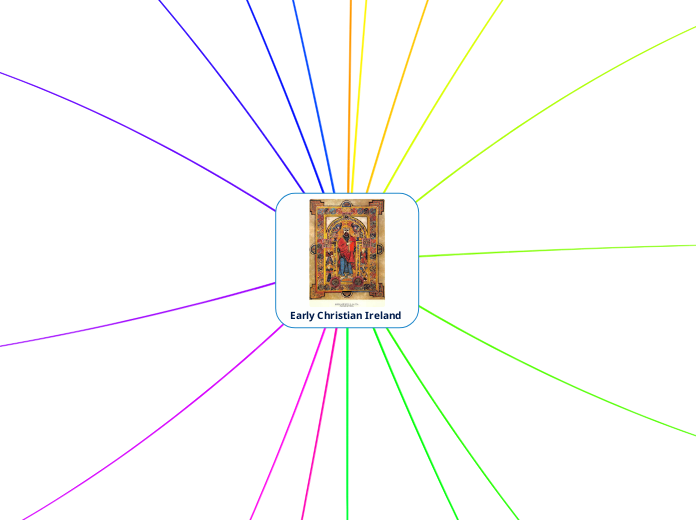Early Christian Ireland
New religion
Irish people were converted to to a new religion, Christianity
The early Christian is period from about 400 AD to 1000 AD . Christian first came to Ireland in the fifth century, around 431 AD.
Most of people in Ireland at that time believed in pagan gods .
The Pagan religion and many celtic festival became Christianity fesival instead.
For the rest of this chapter, we will consider other significant changes .
Early Irish monasteries
In the 6th century [ 500-599 ] and after, many monasteries were built in Ireland .
Holy men who wanted places to pray and honour God founded most of the monasteries.
Men St Ciaran of Clonmacnoise, St Kevin of Glendalough and St Brenden of Clonfert .
in the monasteries :
The Bible was studied .
Manuscripts [ handwritten books ] were copied .
Metal-working and stone-carving produced great works of art to God .
Visitors were welcome.
They followed strict rules,'because by obeying him they obey God'.
Their main activity was prayed. They had six to eight services each day .
They wore long tunics with woolen cloaks, and shoes or sandels, and their hair was cut in a tonsure [ cercular haircut ]
monasteries buildings
In a larger monasteries, buildings were surrounded by a circular bank or wall.
What happened in early Christian Ireland ?
Lots of monasteries were built during the Early Christian Ireland period, such as Glendalough in co. Wicklow and skellig michael near Co. Kerry .
manuscripts:
The monasteries produced manuscript books .
Manuscript are handwritten books.
The gospels, The plasm [ legend ] written down in Latin, the annals record the events of early Irish history
The monks were called scribes. they practised their skolls on wax tablets .
The scribes copied the manuscripts in the scriptorium on vellum [ calfskin ] or parchments [ sheepskin ] .
The monks used reeds or quills.
The ink was produced from minerals plant and leavs.
Who were the early Christian Irish missionaries ?
Palladius, and saint Patrick .
By 20th century, at Patrick and the coming of Christianity became part Irish national identity [ a sense of being Irish ] .
St Patrick's Day on 17 march is a national holiday.
St Patrick's Day brings the Irish diaspora [ Irish people abroad] together.
St Patrick's was born in Roman Britain, but the age 16 he was captured by Irish raiders,
Ireland as a missionary in 432 AD .
Sources for Early Christian Ireland
high crosses
The monks also carved high stone crosses.
The first stone crosses were simple in design, but later crosses had details of scenes from the Bible, as well as figures of saints.
these carvings were used to teach people about Christianity.
metal-working :
Monks also produced fine chalices, croziers [ long staffs symbolising the authority of a a bishop ] and brooches decorated with gold, amber and enamel .
The intricate gold wring was called filigree .
key words :
What did Christian do to Ireland ?
Christianity brough Latin to Ireland .
historical significance of Christianity on the island of Ireland in later centuries
Early Christian Ireland artefacts :
The Ardagh chalice
Derrynaflan Hoard
A crozier
The Tara Brooch
Filigree on the side of the chalice
Round towers
Round towers were built in some monasteries, such as Glendalough and Clonmacnoise.
They were stone towers between 25 and 40 metres tall.
The door was high above the ground and was reached by a ladder or wooden steps . Inside there were four or more wooden floors. At the top of the tower, there were four windows facing north ,south, east and west.
the towers were used as belfries [ bell towers ] when a hand bell was rung from the top windows to call monks to services.
